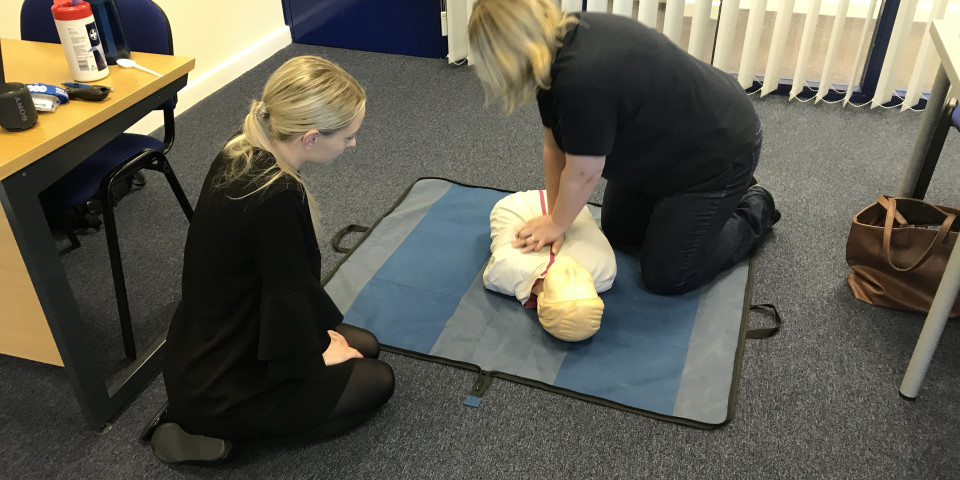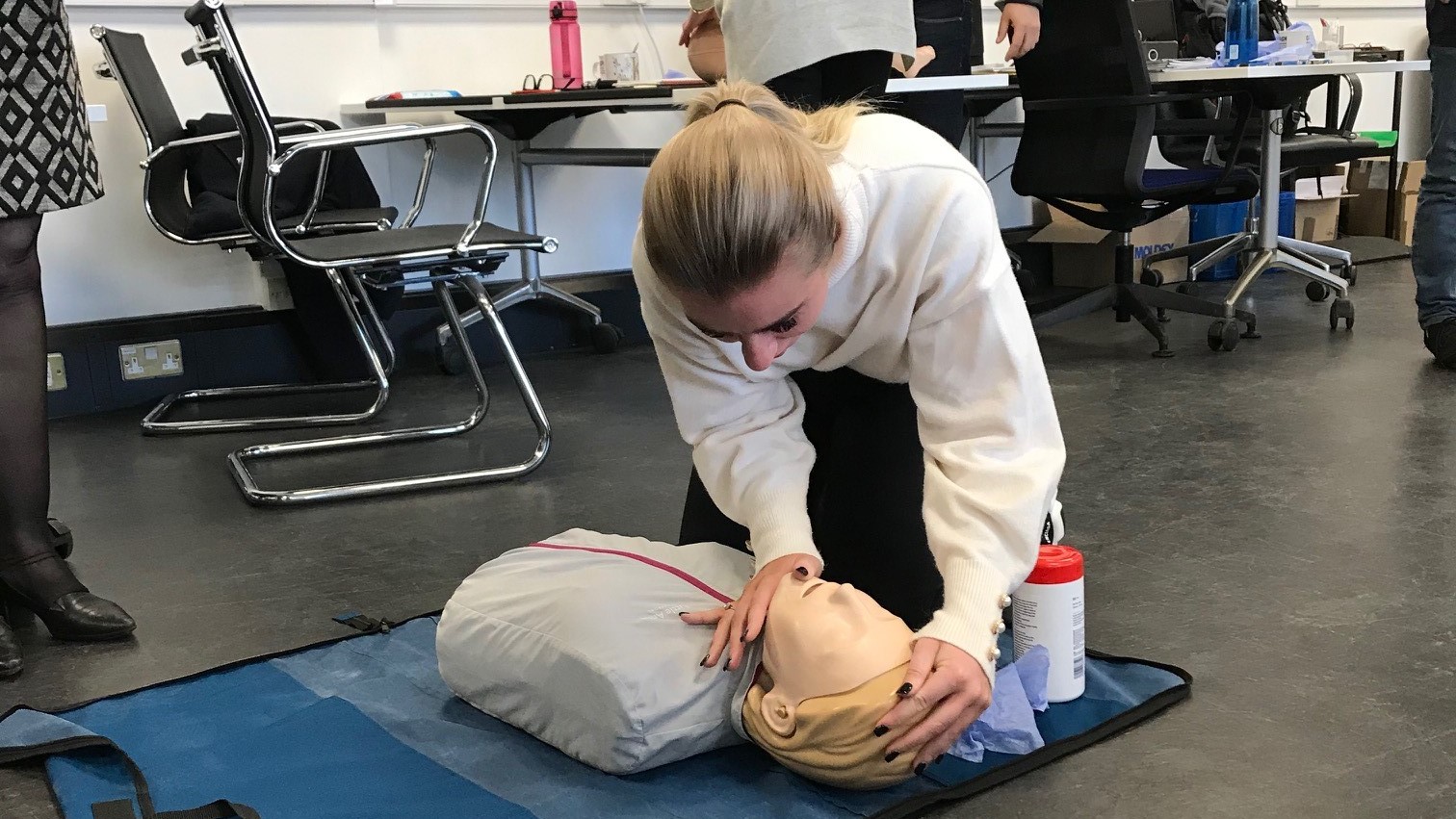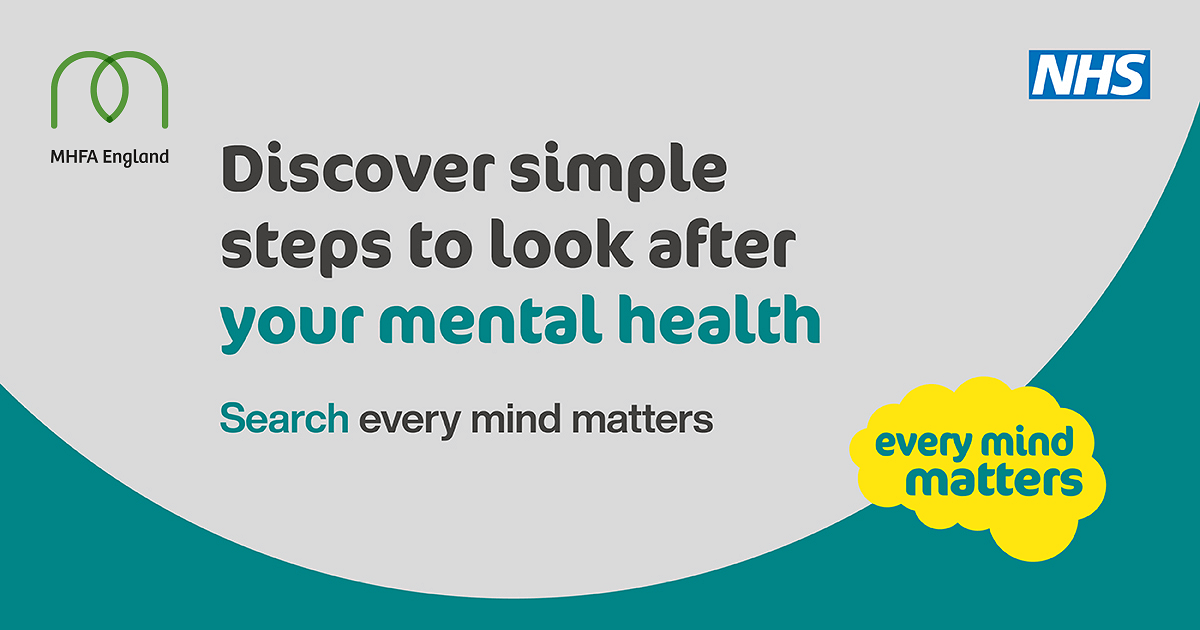Latest News
First Aid Courses with ESS
Posted on Friday, 4th September 2020

No matter how safe you think your workplace is, accidents happen. In 2018/19, over 581,000 people sustained an injury at work, with 111 people being killed in the workplace. As part of an employer’s legal duty to their staff, they have to have the necessary personnel and training in place to respond in the event of an accident on their premises.
The only way for companies to meet their legal responsibilities is to provide staff with first aid training. In today’s blog we look at the fundamentals of first aid training and at how Essential Site Skills can help you get the training right for you.
*please note that the photos used in this blog were taken in training sessions that took place before the Coronavirus pandemic
Why is first aid important?
Simply put, first aid can be the difference between life and death. In the event of a serious accident, a quick response to address injuries and prevent any imminent danger can have life changing results. Having the right first aid training in place can prevent an individual’s condition from worsening whilst they wait for medical professionals to arrive on the scene. According to the American Heart Association, 45% of cardiac arrest victims survived when CPR, a first aid technique used to restart blood circulation, was performed at the scene by first aiders.
What are the legal requirements for companies?
The Health and Safety (First Aid) Regulations 1981 state that all employers have a legal duty to have appropriate staff and training in place to effectively respond in the event of accident and injury in their workplace. They need to ensure there are an appropriate number of staff trained in matters of first aid to cover for staff being out of the office. There should always be at least one member of staff with first aid training on-site at any given time.
What are the main principles of first aid?
There are three main principles that need to be considered when performing first aid:
Preserve life
This first step involves ensuring that the individual is not in any mortal danger. This involves taking action to ensure that any immediate threats to life are avoided. However, this will involve the first aider making a judgment call in order to not put themselves or others at risk in attempting to help.
Prevent deterioration
Once any immediate danger has been avoided, the first aider needs to stop the person’s condition getting worse. Avoid moving the individual to prevent aggravating any injuries further, and clear the area to ensure that health professionals can attend to them quickly and without interference.
Promote recovery
This is where the first aider begins acting to help the individual recover. The steps here will depend on the nature of the injuries. For example, it may involve making attempts to stop bleeding, or placing them in the recovery position.
The only way individuals can perform these three steps correctly in order to help any injured person, is by having the correct training. Attempting to help when you have not had the appropriate training can make the injuries worse, or place other people in harm’s way.

What is ABC in first aid?
One of the main purposes of first aid is to ensure the individual is breathing correctly. For this, it is important to remember ABC; Airways, Breathing, Circulation.
Airway
When a person is unconscious, it’s very easy for their airway to become blocked by their tongue. This can cause suffocation as it prevents oxygen entering their body. This is why the recovery position is so important, as it puts the person’s body at an angle where the tongue cannot block their airway in this manner.
Breathing
When approaching any situation where first aid is required, you need to check the individual is breathing. This can normally by done by seeing if their chest is moving up and down in a breathing motion, but you can also check by holding your hand above their mouth or nose and feeling for air. If they are not breathing, they may need to be resuscitated.
Circulation
It’s vital to check for signs that blood is circulating in their body. If the person is moving, their circulatory system is working. If they are unconscious, the first aider check for signs of a heartbeat by placing two fingers on the side of their neck, or the underside of their wrist. If there is no heartbeat or breath, CPR may have to be performed; but this should only be as a final option.
You will learn about how to implement ABC in greater detail on both our First Aid at Work and Emergency First Aid at Work courses.
Which first aid course is the best?
At Essential Site Skills, we provide a range of different first aid courses to suit your needs. Two of our most popular courses are First Aid at Work and Emergency First Aid at Work. Both of these courses are accredited by Qualsafe and provide a nationally-recognised certification valid for three years upon completion.
Both courses cover many of the same essential areas of workplace first aid procedure, however the First Aid at Work course goes into much more depth. First Aid at Work takes place over three days, whereas Emergency First Aid is only over one. Your employer may have a preference on which course they would prefer you to take depending on your responsibilities in the workplace, and the level of training other staff members have.
On these courses, learners will develop a range of practical first aid skills including:
- Managing unresponsive casualties
- CPR
- How to handle choking
- ABC
- Addressing bleeding, wounds, and other minor injuries
Those on the full First Aid at Work course will also cover additional topics such as how to assess first aid situations, how to respond to heart attacks and how handle people suffering from spinal injuries.
First Aid e-learning:
We also provide remote first aid training through our suite of e-learning courses. These can be completed entirely from home, or anywhere with an internet connection. These are the perfect opportunity for anyone furloughed or working from home to continue their development and add to their skillset whilst out of the office.
Mental health first aid:
As well as first aid for physical injuries and accidents, an increasing number of organisations are seeing the importance of having designated mental health first aiders on site. Those trained in mental health first aid will be able to identify when those around them are suffering from issues such as depression, anxiety or other types of disorder and addiction.
While having a mental health first aider on site is not a legal requirement as of yet, it can be a huge step in protecting the welfare of staff. Identifying and addressing mental health issues in colleagues early can prevent more serious long-term physical and psychological harm for the person, increasing the morale of staff and reducing the number of days lost to illness across the company. To find out more about what mental health first aiders do, why not read our blog written for Time to Talk Day.

Contact us
If you want to see a full list of the training options we have available, you can head on over to our course index. If you have any more questions, you can contact the training team directly on 0115 8970 529. You can also email us info@essentialsiteskills.com.


